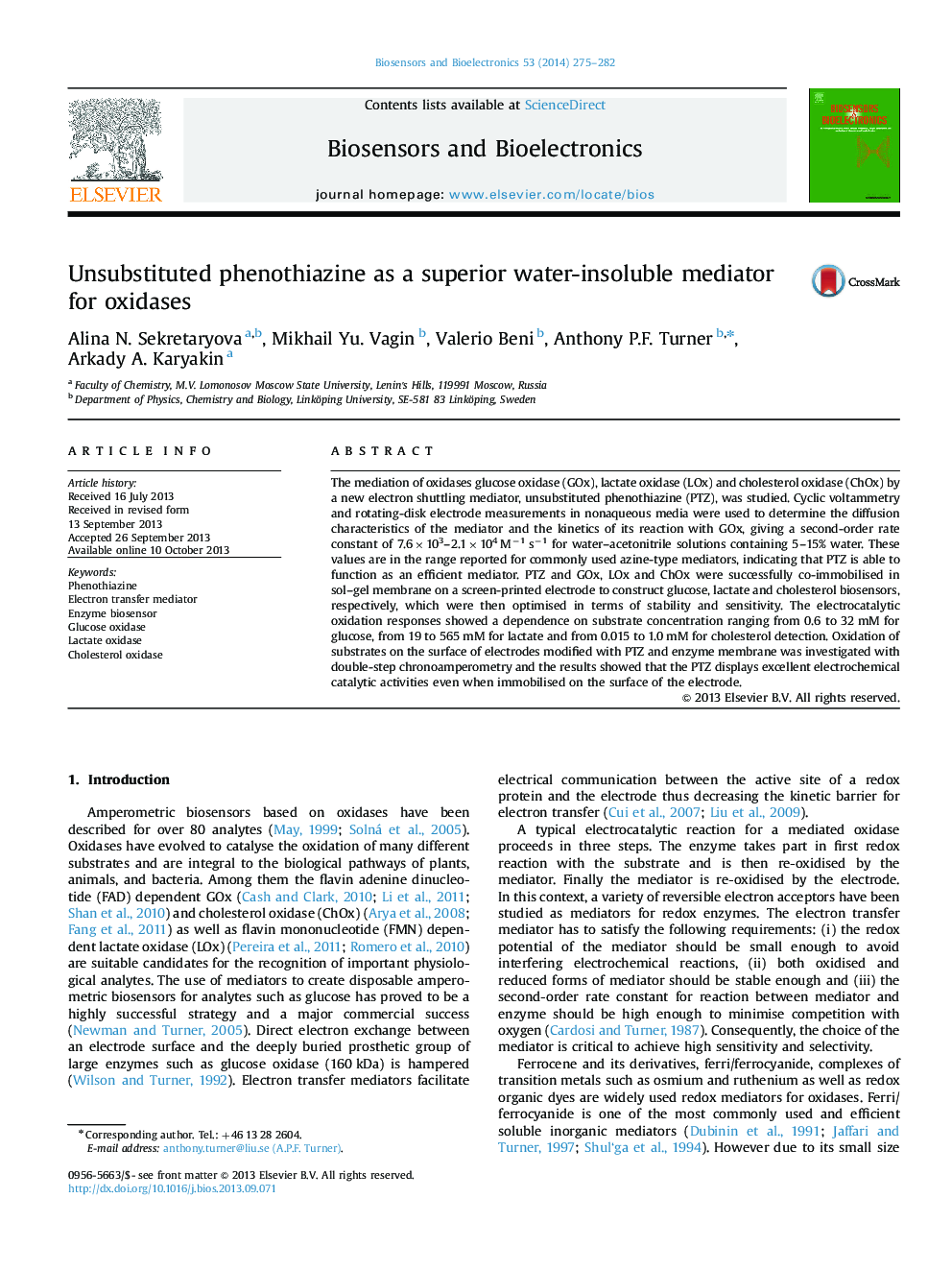| Article ID | Journal | Published Year | Pages | File Type |
|---|---|---|---|---|
| 866702 | Biosensors and Bioelectronics | 2014 | 8 Pages |
•The kinetics of the electrocatalytic oxidation of glucose with GOx mediated by a new electron shuttling mediator, PTZ, was studied.•PTZ delivers superior potential performance among azine-type redox mediators for GOx.•PTZ and GOx, LOx and ChOx were successfully co-immobilised in sol–gel membrane on a screen-printed electrode to construct glucose, lactate and cholesterol biosensors, respectively.•Second-order rate constants for the reaction between the mediator and variety of oxidases co-immobilised inside a sol–gel membrane were obtained by chronoamperometry.
The mediation of oxidases glucose oxidase (GOx), lactate oxidase (LOx) and cholesterol oxidase (ChOx) by a new electron shuttling mediator, unsubstituted phenothiazine (PTZ), was studied. Cyclic voltammetry and rotating-disk electrode measurements in nonaqueous media were used to determine the diffusion characteristics of the mediator and the kinetics of its reaction with GOx, giving a second-order rate constant of 7.6×103–2.1×104 M−1 s−1 for water–acetonitrile solutions containing 5–15% water. These values are in the range reported for commonly used azine-type mediators, indicating that PTZ is able to function as an efficient mediator. PTZ and GOx, LOx and ChOx were successfully co-immobilised in sol–gel membrane on a screen-printed electrode to construct glucose, lactate and cholesterol biosensors, respectively, which were then optimised in terms of stability and sensitivity. The electrocatalytic oxidation responses showed a dependence on substrate concentration ranging from 0.6 to 32 mM for glucose, from 19 to 565 mM for lactate and from 0.015 to 1.0 mM for cholesterol detection. Oxidation of substrates on the surface of electrodes modified with PTZ and enzyme membrane was investigated with double-step chronoamperometry and the results showed that the PTZ displays excellent electrochemical catalytic activities even when immobilised on the surface of the electrode.
